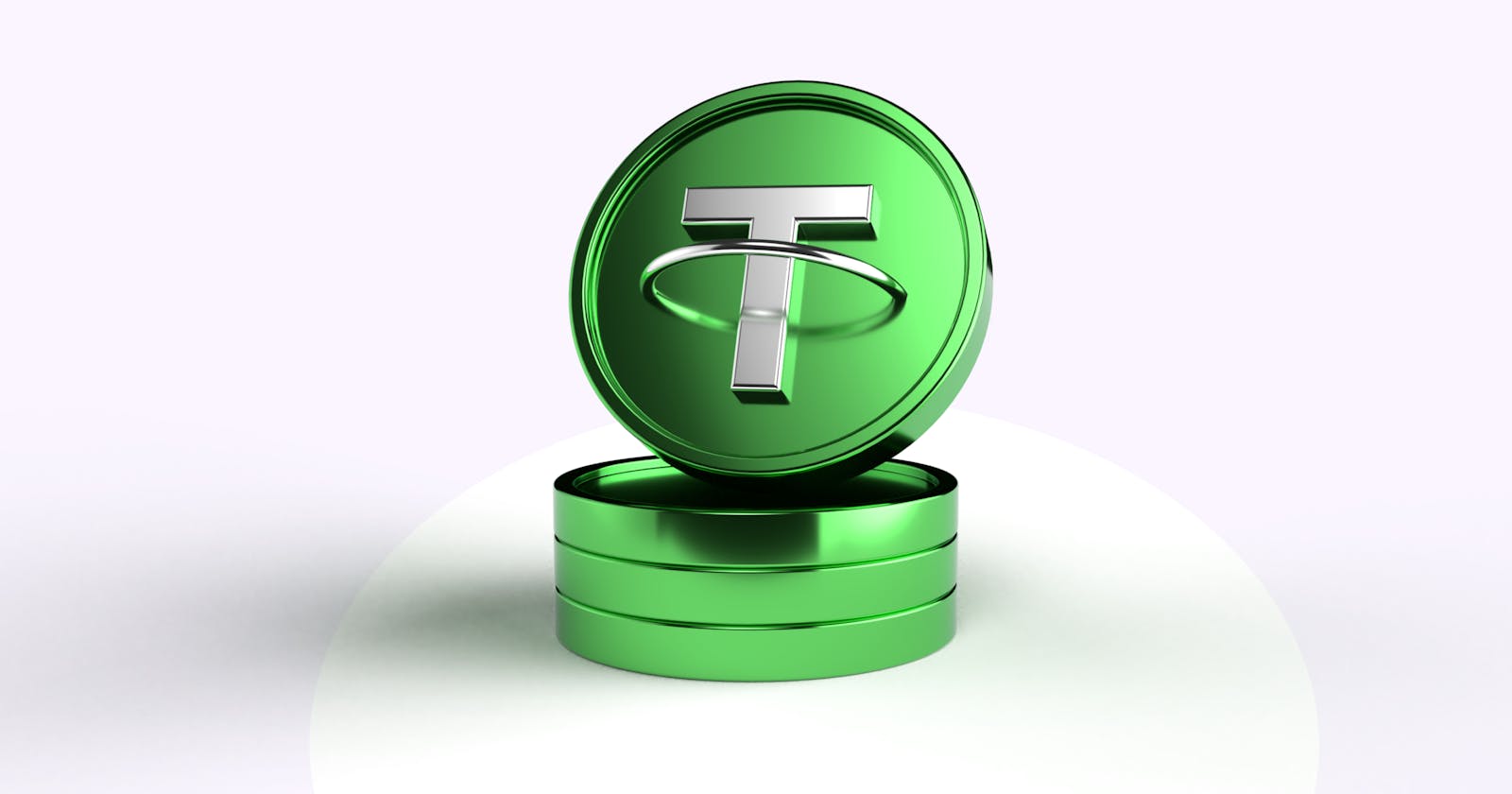You've probably heard of them, seen them, and maybe even used them.
Stablecoins are a fundamental part of the cryptocurrency ecosystem. They make up over 600 million transactions per day! Without them, the entire space would struggle to operate.
But, what exactly are stablecoins?

And, how do they work?
It's important for you to understand what they are. But don't worry, we've got you covered.
What Is a Stablecoin? 🤔
A stablecoin is a cryptocurrency token that has its price pegged to a stable asset. This is a design that battles against the innate volatility of the crypto market.
Most often stablecoins are pegged to fiat currency, usually the US dollar. But you can also find ones pegged to other assets, like gold.
What Do We Use Stablecoins For?
Stablecoins have multiple use cases.
1. Take Profits or Protect Against Losses 📈
Users will swap their crypto for stablecoins when they want to take profits or protect themselves against losses in the market.

As we all know, other crypto coins and tokens are highly volatile. If you decide you want to secure your profits, you’ll have to sell it. However, swapping it for another volatile asset could result in losses further down the line. Therefore, swapping it for stablecoins is a safe way to secure your profits.
This is similar to selling a stock for your native currency on Robinhood.
2. Spending Crypto 💰
Although you can use other cryptocurrencies to purchase things, stablecoins offer a more stable alternative to Ethereum.
If you hire someone and offer to pay them 1 ETH for their work, the USD value for this could change by the time they've completed the work.
Either in your favor or theirs. Paying someone 3,000 USD as a stablecoin is an alternative that protects both people in this scenario.
Paying with stablecoins is also more logical for day-to-day payments. Such as, when using a crypto card.
Stablecoins battle the typical Bitcoin pizza conundrum.
3. Passive Income Potential 💲
Just like with other cryptocurrencies, you can stake your stablecoins.
Again, the key difference is the reliability of the price of stablecoins. This eliminates part of the risk when staking other assets.
For example, when staking Cardano for 5% on the Yoroi wallet, the asset could drop 10% in price, meaning you've actually made a loss while staking.
When staking stablecoins, the estimated APY (annual percentage yield) is more accurate to what you'll actually get.
For example, you can get up to 20% APY from staking the UST stablecoin on Anchor Protocol.
How Do Stablecoins Work?
So we've told you what they are and why you'd use them, but how do they work?

There are four main types of stablecoins defined by their collateral structure: fiat-backed, crypto-backed, commodity-backed, and algorithmic; although, they’rel not entirely exclusive. Some crypto-backed projects may also have an algorithmic element or also be backed by fiat.
Fiat-Backed Stablecoins 💵
Fiat-backed stablecoins are probably the most common type. This is where the token is backed by fiat currency, usually at a ratio of 1:1.
In theory, the project should have reserves equal to the amount of the stablecoins that have been issued.
In other words, if 10,000 USD of stablecoins have been issued, there should be 10,000 USD in reserves somewhere. This is usually managed by an independent custodian.
The biggest example of a fiat-backed stablecoin is Tether(USDT). At the time of writing, USDT is the third-largest cryptocurrency by market cap. The team behind the stablecoin, claims that USDT is backed by US dollars 1:1.
However, the project has found itself in a spot of controversy about whether they are actually backed 1:1.
Crypto-Backed Stablecoins 🤑
Crypto-backed stablecoins are backed up by cryptocurrencies (rather than fiat currency).
The main issue with this collateral structure is the innate volatility of cryptocurrencies. To battle this, most crypto-backed stablecoins are over-collateralized to absorb any price fluctuations. Some projects may even use other stablecoins as collateral, as the chance of volatility is slim.
Unlike fiat-backed stablecoins that collateralize to a 1:1 ratio, crypto-backed stablecoins may use a ratio of 1:2 to leave room for 50% swings in the reserve currency. For example, for every 1 USD of stablecoin minted, there will be 2 USD of ETH added to the reserves.
These projects still have a chance of collapsing if there is a wild swing in the market.
Crypto-backed stablecoins are seen as more decentralized than fiat-backed stablecoins.
This is because the reserves can be managed through smart contracts that will buy or sell assets to maintain the correct level of collateral, making it partly algorithmic.
However, this is not the case for all crypto-backed stablecoins. Some will be managed by an independent custodian.
Probably the most popular example of a crypto-backed stablecoin is MakerDAO's DAI token, which uses ETH as collateral.
Commodity-Backed Stablecoins 🛢
Commodity-backed stablecoins use anything other than crypto or fiat to collateralize their reserves. This could be gold, real estate, oil, etc.
Often these tokens will represent the commodity that they use as collateral. For example, Tether's gold stablecoin is backed by gold while being pegged to the precious metal's price.
Historically, investment in these commodities has been restricted to the financially privileged. These projects create opportunities for those who were previously unable to invest in such assets.

Algorithmic Stablecoins 🤖
Algorithmic stablecoins utilize algorithms to maintain their value. They’re decentralized and often do not require any collateral.
If we're honest, these are the most confusing stablecoins to get a grip on. They can be roughly divided into three categories: rebase, seigniorage, and fractional algorithmic stablecoins.
Again, it's good to remember that these are not mutually exclusive. For example, a crypto-backed stablecoin could utilize an algorithm to maintain its level, such as the previously mentioned DAI.
1. Rebase Algorithmic Stablecoins
Rebase algorithmic stablecoins will adjust the total token supply in order to stabilize its price.
This algorithmic structure displaces the possibility of price volatility with supply volatility. Rebase is the term for when the total token supply increases and debase is when the supply decreases.
The change in supply will be proportional to the change in price from the pegged price. This is to say that if the price increases by 10% from the pegged price, the total token supply will automatically increase by 10% to counteract the price change.
Despite the number of tokens changing for users, the stake in the total supply remains the same. Therefore, the value of the user's holdings doesn't change despite the change in the number of tokens they hold.
Although this sounds great,, historically, we've seen these types of stablecoins fail to keep their price at 1 USD.
2. Seigniorage Algorithmic Stablecoins
Seigniorage algorithmic stablecoins create arbitrage opportunities to stabilize the token's price.
Often this will follow a multi-token system. One token will be pegged to a value, then the other token(s) are used to increase or decrease the price of the pegged token.
It's easiest to explain this with an example. Let's take a closer look at Basis Cash, a seigniorage algorithmic stablecoin.
You have the Basis Cash (BAC) token which is pegged to the US dollar.
When the price of BAC goes above 1 USD, they print more. What do they do with the new tokens? They distribute those new tokens to holders of the Basis Shares (BAS) token.
Now, what if the price of BAC drops below 1 USD? You’re then able to swap your BAC for a Basis Bond, which means you’re going to be paid before BAS holders next time the price of BAC goes above 1 USD.
Essentially, seigniorage algorithmic stablecoins allow the users of a network to regulate the price of a token through arbitrage.
Again, unfortunately, there is a history of seigniorage stablecoins failing after the initial expansion phase. Once people start trading the stablecoin for other cryptocurrencies, and the market cap starts to shrink, there’s a high risk of the price going into a death spiral, with the price possibly going to 0.
3. Fractional Algorithmic Stablecoins
Fractional algorithmic stablecoins are somewhere in between seigniorage and collateralized stablecoins. They often use a multi-token system to create arbitrage opportunities, while still being backed by fiat, crypto, or other assets.
If the price goes above 1 USD, the algorithm will produce more stablecoins until the price goes back to 1 USD. Correspondingly, if the price goes below 1 USD, the algorithm will burn tokens.
The most successful example of a fractional algorithmic stablecoin is FRAX (literally named after the stability mechanism).
Their collateral ratio is constantly changing; this dictates how the token stabilizes. When FRAX's price goes above 1 USD, the collateral ratio will decrease; if it goes below 1 USD, it’ll increase its collateral ratio.
This means that when their collateral ratio is at 100%, the entire value of what is put into the system is backed by collateral. If that ratio drops to 75%, for every 1 FRAX, there’ll be 0.75 USD collateral and 0.25 USD of Frax Shares (FXS).
To be honest, it's all very confusing and complex. Thank god algorithms are doing this for us.

Conclusion
Stablecoins act as an essential part of the cryptocurrency ecosystem. They're often easy to use, but as we've found out in this article, it isn't easy to understand how they work.
Often projects blur the lines between what type of stablecoin they are. DAI, for example, is an over-collateralized, crypto-backed algorithmic stablecoin. It doesn't fit in the box of one or the other.
We're in a space that’s constantly evolving and changing. By the time you're reading this, there may be a new type of stablecoin out there.
However, it's important that we continue to research how these things work. If a major stablecoin project dies, it could result in major repercussions for the crypto space.
This blog is a part of the Hashnode Web3 blog, where a team of curated writers are bringing out new resources to help you discover the universe of web3. Check us out for more on NFTs, blockchains, and the decentralized future.

